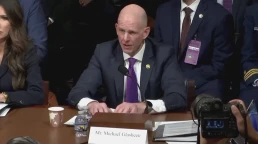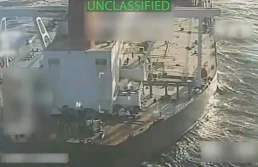Forty eight ceasefires between 1946 and 1997 — while often ignored — offer guidance on how to end the killing. Since history shows it takes a long time to end a war, Ann Wright says the process must start now.
By Ann Wright, Consortium News
Negotiations, ceasefires, armistices and peace agreements are as old as wars themselves.

Every war ends with some version of one of them.
Wars have been studied endlessly, but lessons learned on how to end the wars have generally been ignored by those conducting the world’s latest wars.
To stop the killing in the Russia-Ukraine conflict, people of conscience must do everything they can to make negotiations for a ceasefire become a reality.
That was the purpose of the International Summit for Peace in Ukraine held in Vienna last weekend.
Over 300 persons from 32 countries attended the conference and participated in the robust program to discuss how to create conditions for a ceasefire and ultimately an agreement to stop the killing. The websites for the International Peace Bureau and the Peace in Ukraine summit were hacked the day after the conference but should be up and running soon.
If history is our guide, negotiations for peace will take weeks, months or perhaps years, to get Ukraine and its allies to agree on a negotiating strategy — and even longer to come to an agreement with Russia after negotiations begin.
Even if all parties, Ukraine, Russia, U.S./NATO, would agree to negotiations tomorrow, and if the talks would ultimately succeed, it could possibly be months or years before the killing would end. That’s why negotiations must begin now.
History gives us an important insight into negotiations during a war and what we might expect to end today’s extremely dangerous international violence.
In the case of the Korean armistice finally signed 70 years ago on July 27, 1953, 575 meetings between North Korea, China, the U.S. and South Korea were required over two years from 1951 to 1953 to finalize the nearly 40 pages of the agreement. During those two years, millions of Koreans, 500,000 Chinese and 35,000 U.S. and tens of thousands of U.N. Command soldiers were killed.
Recent Posts
‘Total Amateur Hour’: FBI Official Says Antifa Is #1 Threat in US—But Can’t Say Where, Who, or What It Is
December 13, 2025
Take Action Now “Just a complete admission here that the entire ‘antifa’ threat narrative is totally manufactured by this administration,” said one…
Utah Leaders Are Hindering Efforts To Develop Solar Despite A Goal To Double The State’s Energy Supply
December 12, 2025
Take Action Now Utah Governor Spencer Cox signed bills that will make it more difficult and expensive to develop and produce solar energy, ending tax…
Report of the Independent Democratic Task Force on U.S. Policy Toward Israel
December 12, 2025
Take Action Now For release in connection with the winter meeting of the Democratic National Committee convening on December 11, 2025 in Los Angeles……
U.S. Realizes It Can Seize Boats After All
December 11, 2025
Take Action Now After months of extrajudicial killings in the waters off Venezuela, the Trump administration opted instead to capture an oil tanker.……




